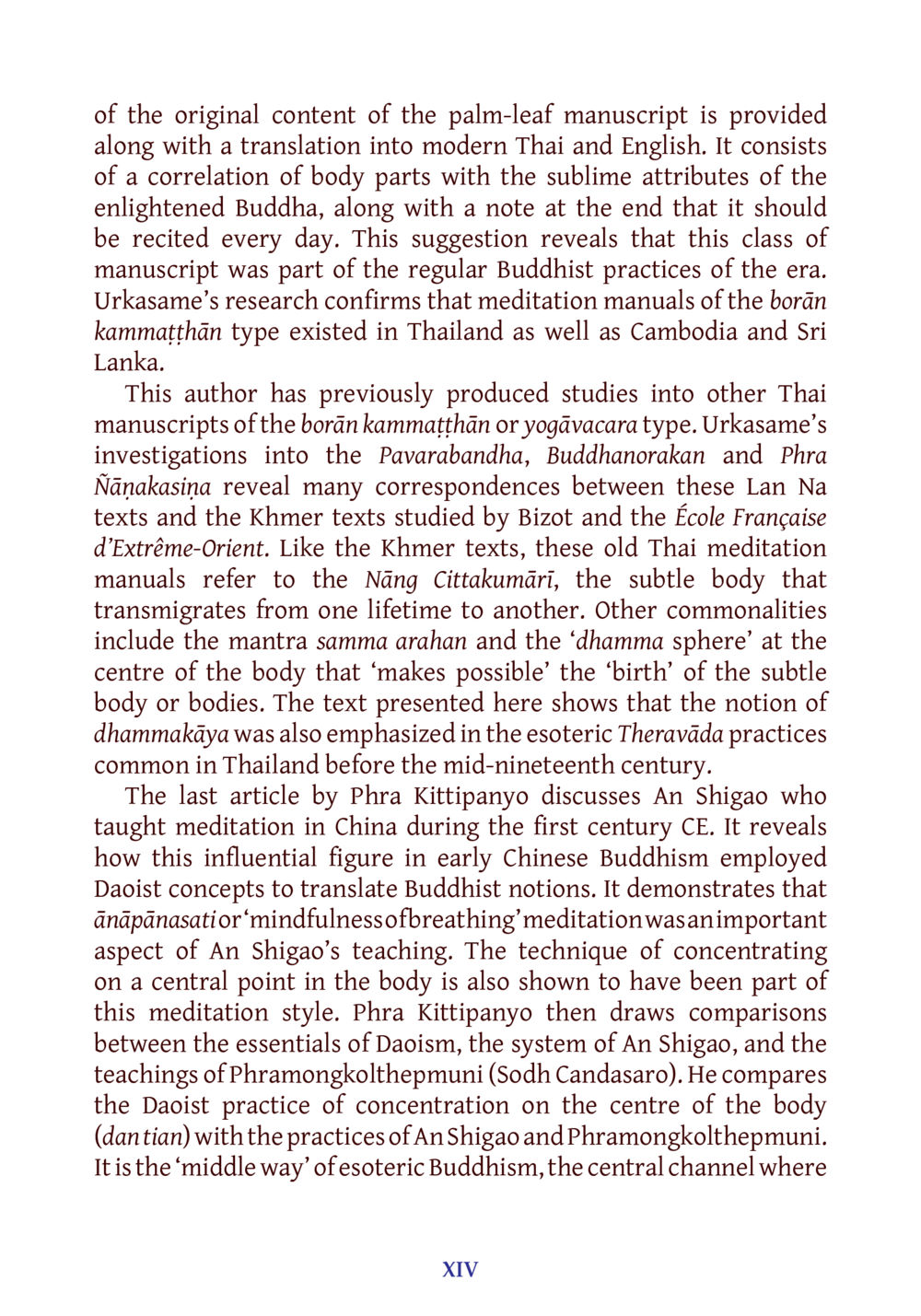Exploring Ancient Thai Meditation Manuscripts and Their Influence : หน้า 19/141
DIRI Journal : หน้า 19/141 A study of ancient palm-leaf manuscripts linking body parts to Buddha's attributes and meditation practices in Thailand and their connections to Chinese Buddhism.
3 ครั้ง

สรุปเนื้อหา
This content discusses the significance of ancient Thai palm-leaf manuscripts, especially those of the bŏran kammaṭṭhān type, which correlate body parts with Buddha's attributes and suggest daily recitation as a Buddhist practice. Research by Urkasame highlights links between these Thai texts and Khmer manuscripts, emphasizing concepts such as the subtle body ('Nāng Cittakumārī') and the 'dhamma sphere'. The article also covers An Shigao's influence in early Chinese Buddhism, particularly his use of Daoist concepts in meditation. By concentrating on the central body point, this technique illustrates the synthesis of Daoism and Buddhism.
หัวข้อประเด็น
-Thai palm-leaf manuscripts
-Relationship between body and Buddha's attributes
-Esoteric practices in Thailand
-Influence of An Shigao on Chinese Buddhism
-Comparison of Daoist and Buddhist meditation techniques
ข้อความต้นฉบับในหน้า
หน้าหนังสือทั้งหมด













































































































































